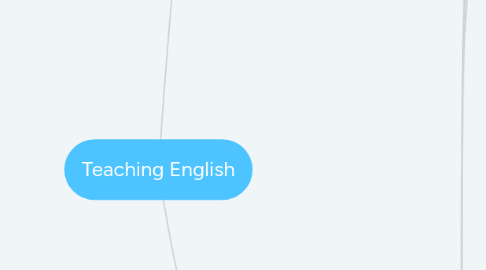
1. Constructivism
1.1. Teaching methods
1.1.1. Phenomenom Based learning
1.1.1.1. Teacher`s role
1.1.1.1.1. Facilitator
1.1.1.2. objective
1.1.1.2.1. Communicative
1.1.1.2.2. Importance of learning and understanding
1.1.1.3. Process
1.1.1.3.1. Real context
1.1.1.3.2. Problem solving
1.1.2. PBL Problem based learning
1.1.2.1. Objective
1.1.2.1.1. authentic production
1.1.2.1.2. focus on meaning- undertanding
1.1.2.2. Teacher`s role
1.1.2.2.1. guide
1.1.2.2.2. Prompter
1.1.2.3. process
1.1.2.3.1. authentic problems
1.1.2.4. Student`s role
1.1.2.4.1. explorer
1.1.3. Task based learning
1.1.3.1. Teacher`s role
1.1.3.1.1. monitor
1.1.3.1.2. facilitator
1.1.3.2. Objective
1.1.3.2.1. learn by doing
1.1.3.2.2. focus on meaning rather than form
1.1.3.3. Process
1.1.3.3.1. central task
1.1.3.3.2. group work
1.1.4. Project based learning
1.1.4.1. objective
1.1.4.1.1. learning by doing
1.1.4.1.2. presentation
1.1.4.2. Teacher`s role
1.1.4.2.1. mentor
1.1.4.2.2. guide
1.1.4.2.3. coach
1.1.4.3. Student`s role
1.1.4.3.1. active
1.1.4.3.2. cooperative
1.1.4.4. process
1.1.4.4.1. work in group
1.1.5. project
1.2. Student centered
1.3. Scaffolding
1.4. outcome
2. Behavourist
2.1. Teacher centered
2.1.1. authority
2.2. Passive learner
2.3. stimul-response
2.4. Approaches
2.4.1. Presentation Practice Production
2.4.1.1. objective
2.4.1.1.1. focus on grammar
2.4.1.2. Teacher`s role
2.4.1.2.1. prompter
2.4.1.2.2. controller
2.4.1.2.3. active
2.4.1.3. Student`s role
2.4.1.3.1. passive
2.4.1.3.2. listener
2.4.1.3.3. reproductor
2.4.2. Grammar Translation
2.4.2.1. focus on grammar translation
2.4.2.2. mother tongue
2.4.2.3. teacher centered
2.4.2.3.1. traditional instructor
2.4.2.4. rules
2.4.2.4.1. no interaction
2.4.2.4.2. correct mistakes
2.4.2.5. Student
2.4.2.5.1. passive
2.4.2.5.2. memorize
2.4.2.5.3. translate
2.4.3. Communicative
2.4.3.1. role play
2.4.3.2. info- gap
2.4.3.3. authentic material
2.4.3.4. deductive learning
2.4.3.5. fluency
2.4.3.6. functions and notions
2.4.3.7. teacher centered
2.4.3.8. Speaking
2.4.3.9. errors are tools
2.4.4. focus on communication meaning
2.4.5. teacher centered
2.4.6. Audiolinguism
2.4.6.1. deductive
2.4.6.2. drilling
2.4.6.2.1. repetition/imitation
2.4.6.3. Student
2.4.6.3.1. active
2.4.6.3.2. apprentice
2.4.6.4. skills
2.4.6.4.1. listening
2.4.6.4.2. Speaking
2.4.6.5. objective
2.4.6.5.1. accurate pronunciation and grammar
2.4.7. Natural approach
2.4.7.1. Teacher centered
2.4.7.1.1. motivator
2.4.7.2. Acquisition
2.4.7.2.1. output
2.4.7.2.2. language
2.4.7.2.3. classroom learnin environment
2.4.7.3. skills
2.4.7.3.1. receptive
2.4.8. Activities
2.4.8.1. Total physical response
